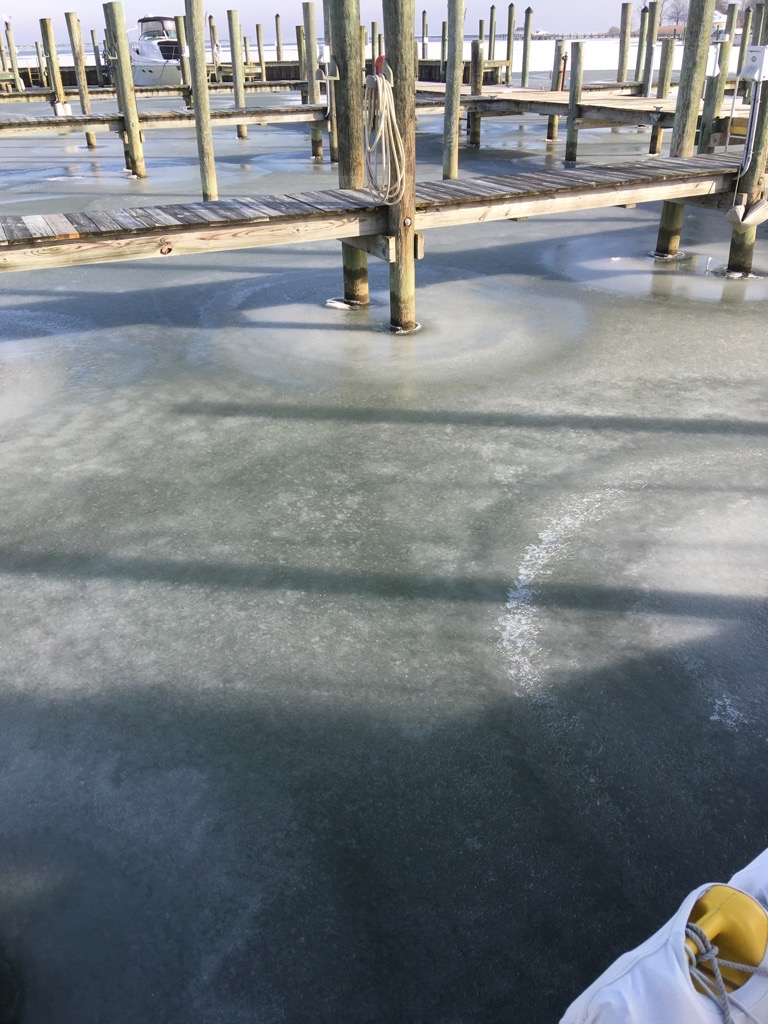Red Ranger is wintering in the water. It's cold.

But. The ice is thin, so, it's not damaging in any way.

Last winter, the port-side deck drain hose filled with water, and then froze, and dropped off the "T" fitting under the cockpit drain.
This put gallons of rainwater straight down into the engine pan. And from there into the deep bilge.
The ice-and-rain water filled the the ice-bound deep bilge until it rose up over the level of the center-line fuel tank. It dripped through the worn-out gasket, filling the center tank with rain water.
What floats on rain water?
A duck. Correct, but only relevant when watching Monty Python and the Holy Grail.
What else floats on rain water?
Diesel fuel.
We spent all last year pumping diesel fuel out of various parts of the bilge. It took me a few months to think the whole process through and (finally) pump the remaining diesel from the center-line fuel tank actually solving the problem.
With me so far?
The center-line fuel tank is about 100 gallons of fresh water. In an ice-filled creek.
It's not going to freeze solid. If we were hauled out in some place like Duluth, then we'd have to worry very seriously about residual water anywhere in the hull. We're in a creek in Chesapeake Bay: the historical low for January is 4°C. No risk of freezing solid.
But.
Just to be sure, I managed to pour a gallon of antifreeze into the tank. The normal 1:1 ratio depresses the freezing point to -37°C. At 1 gallon antifreeze to 100 gallons of water, I think I've moved the freezing point down to -0.4°C. I'll be adding antifreeze periodically to get to 10 or so gallons of antifreeze down there.
It's a very slow process. The old cover for the tank was replaced with a simple aluminum plate with only a vent hole. Pouring a gallon of antifreeze down ¼" line is very not fun. I really need to get some super-small hose and set up a proper siphon so I don't have to sit there, pouring.
The product of choice? A nitrite-free ELC with OAT. Products like Prestone Command® seem to be the right thing to use. Died yellow (typically) these seem to be the long-lasting formulations that will work well in the context of the aluminum tank walls.

